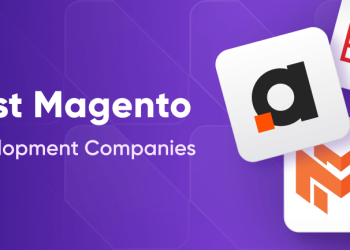The top e-commerce logistics Singapore may transfer goods around the world today by using a variety of shipping and transportation methods.
However, there are situations when just one shipping method is insufficient to deliver your cargo to its destination. Your items may be traveling far by ship or airplane from another continent. To get there, the freight must be transported by land, air, and sea.
As a result, the best logistics services Singapore frequently need to mix several types of transportation to deliver their goods where they need to go. Intermodal and multimodal transports are two examples of this combination that logistical organizations define.
What distinguishes multimodal transportation from intermodal transportation?
Both intermodal and multimodal shipping advocate combining two or more modes of shipping. There are several distinctions between intermodal and multimodal transportation, though. A distinct carrier is in charge of each component of your shipment when you ship intermodal.
As a result, each step in the chain has generated several shipping invoices and reports for you. When employing multimodal transportation, a single bill of lading is used to sign all of your shipments. Both modes of transportation have advantages and disadvantages, and we will focus on multimodal here.
Intermodal transportation:
When moving between modes of transportation, intermodal freight is transported in a container or truck without being handled. The freight movement is completed via several different forms of transportation. In intermodal shipping, a distinct transport company is in charge of each mode’s consignment.
With each e-commerce logistics Singapore, the shipper will have a different contract to handle their specific piece of the consignment. Rail, ship, and truck are some of intermodal shipping’s several means of transportation. Even if multimodal transportation is more expensive, intermodal transportation requires more time for carrier agreements. Intermodal transportation facilitates quicker transit while enhancing security and minimizing loss and damage.
Multimodal Transportation:
Multimodal transportation refers to the blending of many modes of delivery for a consignment. The carrier might be anything from cars to trains to planes to ships. Despite the shipment being broken down into many modes of transportation, it is still covered by a single contract or bill of lading.
Businesses that choose multimodal shipping may handle all interactions and shipment delays through a single source, reducing the strain of coordinating with several contacts. Multimodal transportation has several benefits, including quick delivery times and accurate product tracking.
What advantages does multimodal transportation offer?
Numerous companies that often carry substantial volumes of freight might profit from multimodal transportation. Companies choose multimodal because it needs less time and effort than intermodal, which is the key factor. This is because all shipments are managed by an outside entity and are covered by a single bill.
When organizing your upcoming cargo, your business should consider multimodal shipping for several reasons, including:
Time reduction:
A single shipping supplier manages the whole process in multimodal transportation. By dealing with just one provider, your freight’s delivery delays will be reduced. Faster travel times and less need to worry about the package are guaranteed by multimodal transportation.
Additionally, using many modes of transportation increases productivity. It is much simpler to concentrate on the company and avoid hopping from call to call when the complete transportation chain is handled by a single individual.
Cost-efficiency:
It could appear more lucrative to choose the carriers with the lowest prices. The cheapest choice isn’t necessarily the greatest or most dependable, either. When coordinating shipments with a third-party freight broker, multimodal shipping is a more simple choice.
The knowledge of 3PLs can guarantee that you receive the best deal from a reputable multimodal carrier.
Less concerning:
Your freight is handled door to door by a single carrier, providing easier communication and effective tracking. Companies that use multimodal transportation manage all shipment information, interactions, and delays through a single source. Your business may have a more efficient supply chain by working with one carrier to handle all of your shipments.
Communication is simpler:
Companies that use multimodal transportation manage all shipment information, interactions, and delays through a single source. It is much simpler to concentrate on the company and avoid hopping from call to call when the complete transportation chain is handled by a single individual.
Options for faster transit:
Some longer-haul goods are not moving as quickly as they formerly did as a result of recently implemented limitations on truck drivers, such as driving hours and other rules. Having many forms of transportation combined under one agreement gives you peace of mind and a balanced journey time.
In this manner, you avoid excessive driving by drivers and delivery delays. You can trace your freight more easily thanks to speedier transportation choices. When the shipment is going faster, the chance to track your freight is more effective.
How does technology aid in LTL cost reduction?
Technology has had a significant influence on the shipping sector and may help businesses manage their supply chains more efficiently while also saving money.
If you understand how technology can meet your shipping demands, you can incorporate visibility and improve your shipping plan.
Particularly in the logistics sector, technology is pervasive. It enables businesses to create effective supply chains and satisfy every client’s needs. Due to technology’s efforts to make life easier for everyone, LTL prices have improved for clients.
Shippers may save a lot of money by using accurate forecasts and real-time shipping information. A TMS is a flexible, all-purpose tool that may raise the performance of the business. Shippers may save a lot of money by using accurate forecasts and real-time shipping information. A TMS is a flexible, all-purpose tool that may raise the performance of the business.
3PL service:
A third-party logistics provider may be quite advantageous to outsource to because they provide helpful advice and have access to many automation technologies. Many firms decide to deal with a 3PL supplier that can assist relieve the load of maintaining an internal transportation management system since they lack the time and resources to do so.
Equipment of Dimension:
Dimensional equipment is used by several LTL carriers as an additional efficient means of lowering transportation costs. The dimension Alize, sometimes referred to as dimension equipment, measures the volume of three-dimensional items (such as boxes) to help the carrier calculate shipping charges precisely.
The weight of the item must be disclosed by the shipper. The carrier determines the shipper’s estimated shipping costs using the weight and volume information. Any organization may benefit from dimension equipment, but for certain reasons, shippers stand out the most.
Shipping Prediction:
You must analyze a lot of shipping data in the supply chain process to make future predictions for your supply chain. These forecasts may be made using pricing research, historical data, and industry trends.
The precision of these forecasts is increased by artificial intelligence (AI). AI can speed up data processing and boost accuracy so you can plan for the future of your supply chain more effectively. Long-term savings from AI allow you to avoid having to pay yourself out of a supply chain problem.
Maritime Visibility:
Using technology to provide a real-time view of shipments is another development in LTL transportation. The rapid expansion of e-commerce and its effects on the logistics sector has expanded the meaning of outstanding service.
Customers are kept informed of the whereabouts of their shipments thanks to modern technology, which also promptly alerts them to any situations that need fast feedback. Due to how much the technology has streamlined the LTL shipping procedure, people find it simpler.
















